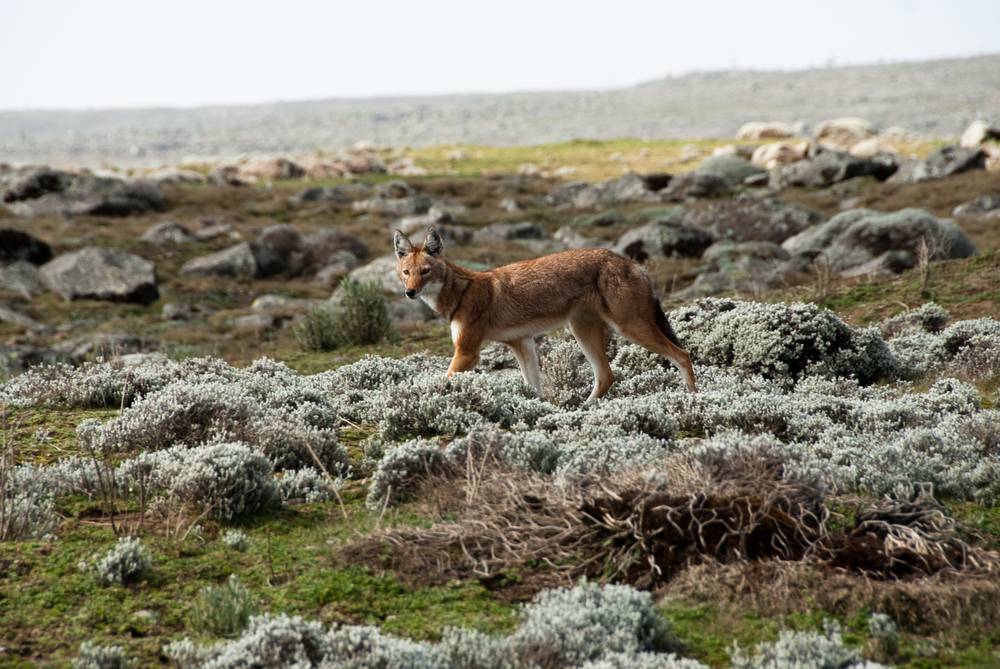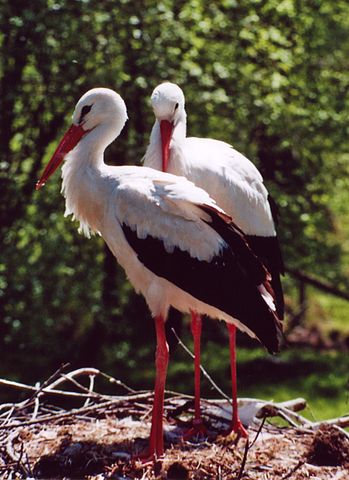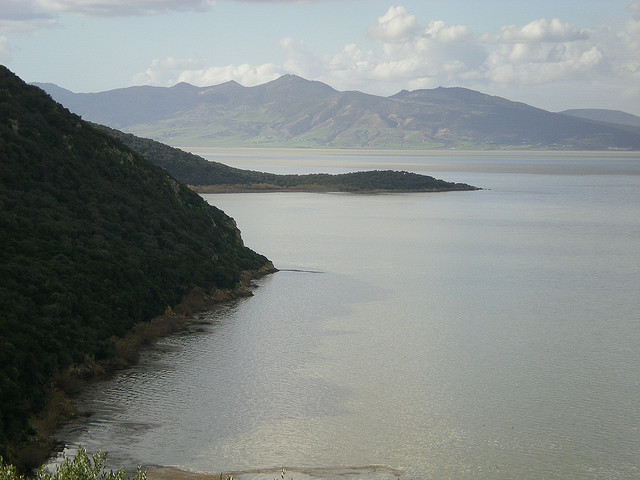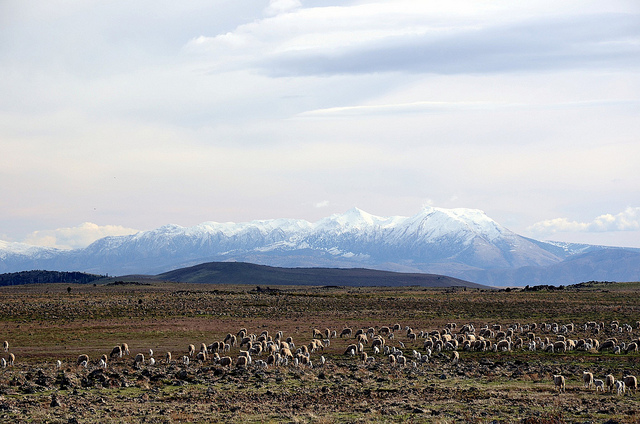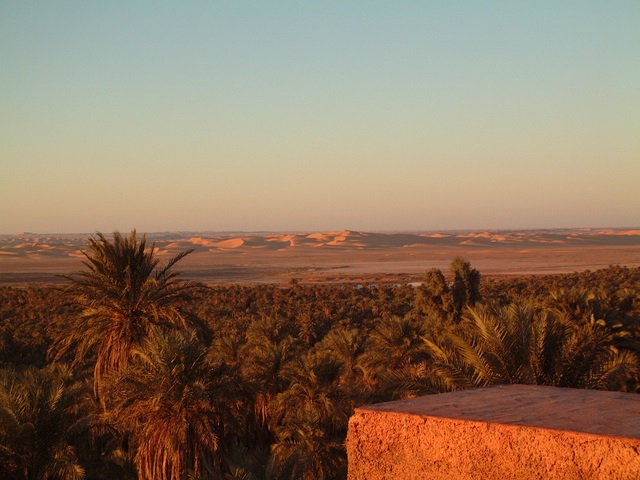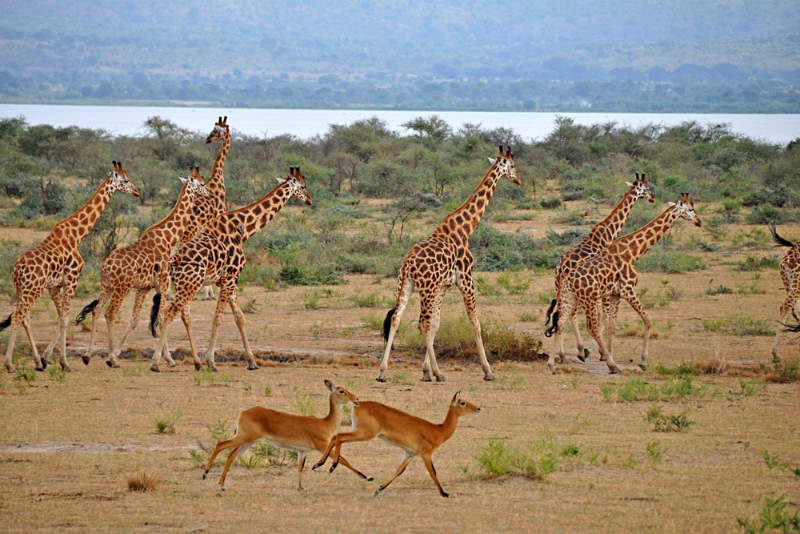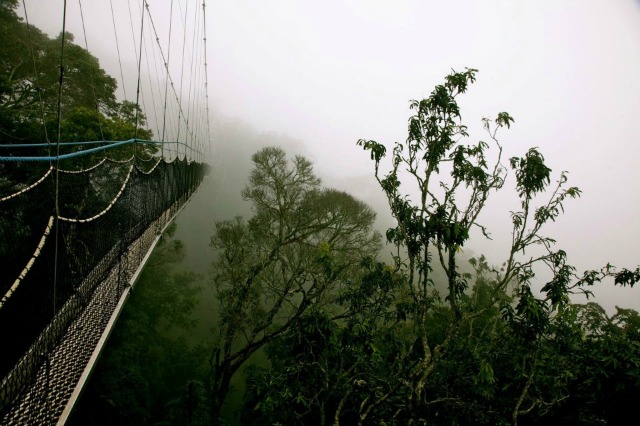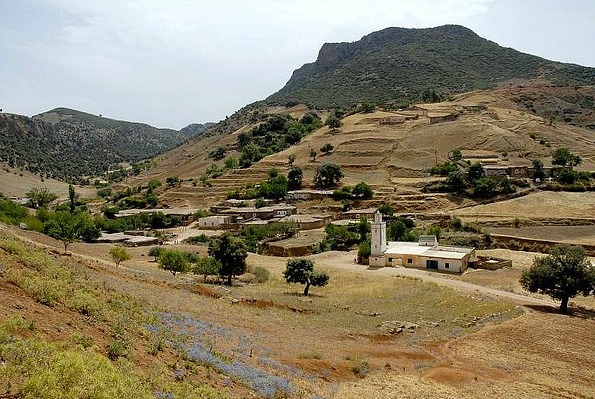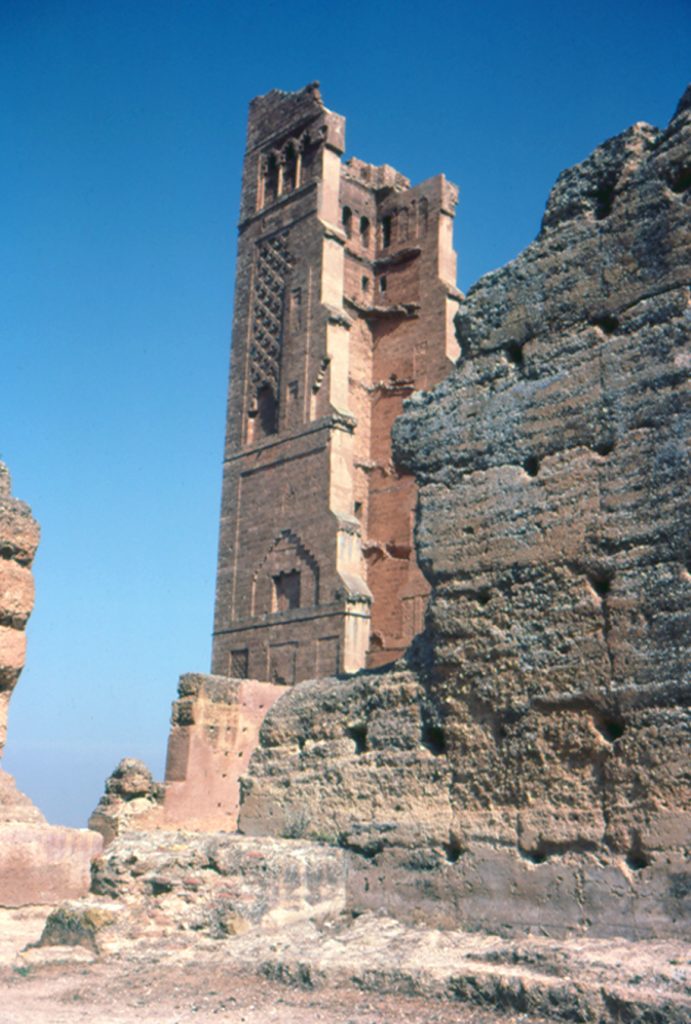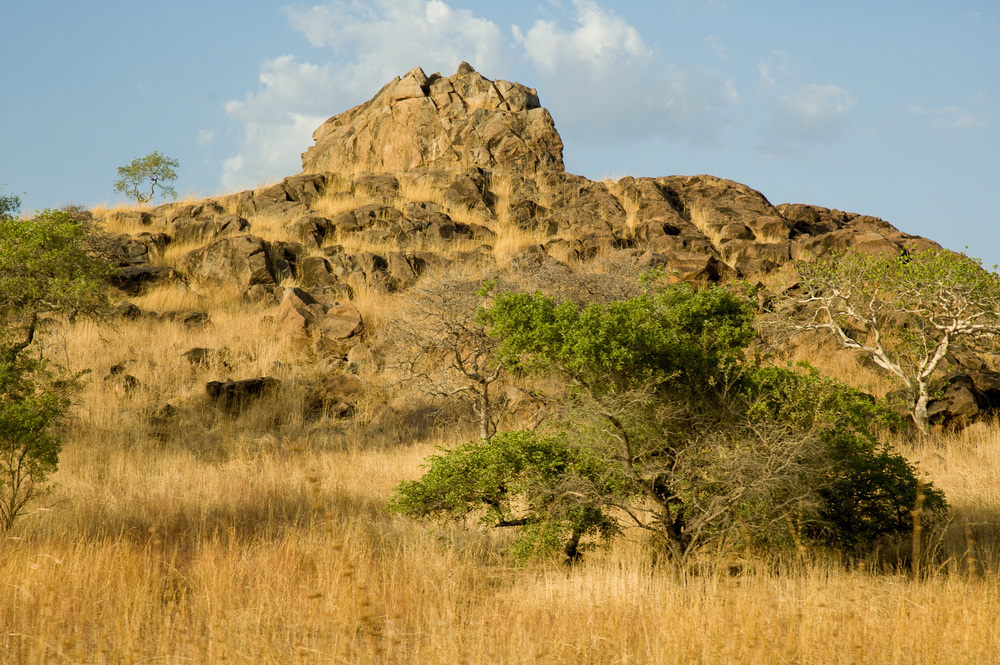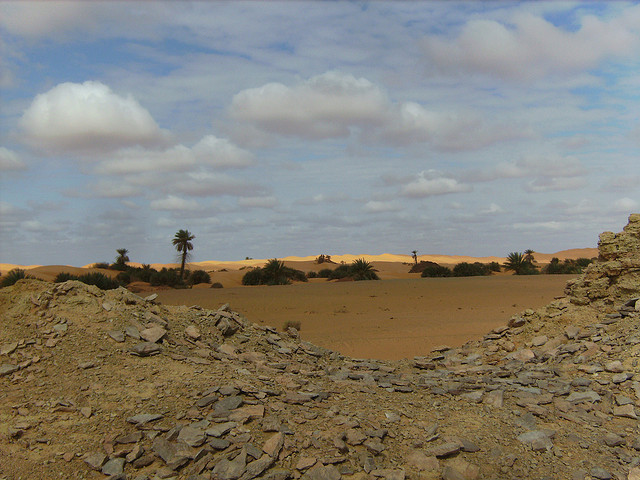It’s undeniable that the number one reason visitors come to Africa is to see its wild natural beauty and abundant animal life. And the best place to do that is in any one of the hundreds of national parks and reserves. Though it’s impossible to include all the incredible national parks in Africa on one single list, we’ve whittled it down to 50 that we think capture the best of north, south, east and west Africa.
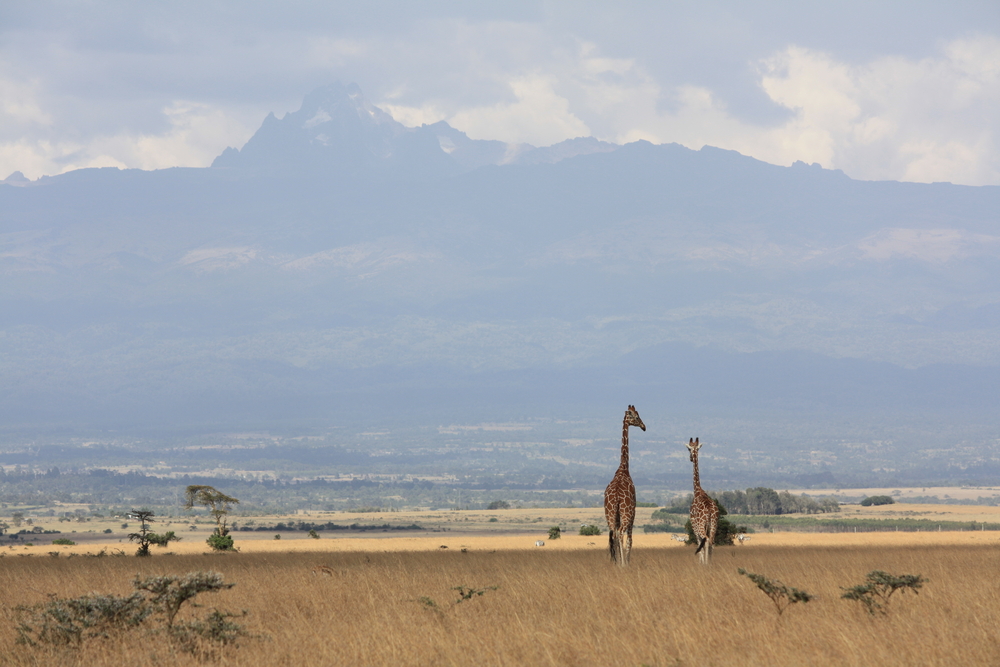
Aberdare National Park. Kenya (Shutterstock)
Aberdare National Park, Kenya
An excellent park for hiking, Aberdare receives more rainfall than most to keep its grounds beautifully green and temperate. There are waterfalls throughout the area. In the lower altitudes of the park, one can even find bamboo and rain forests — not something you would expect on an African safari. Aberdare is home to rare species of rhino, black leopard, and antelope.
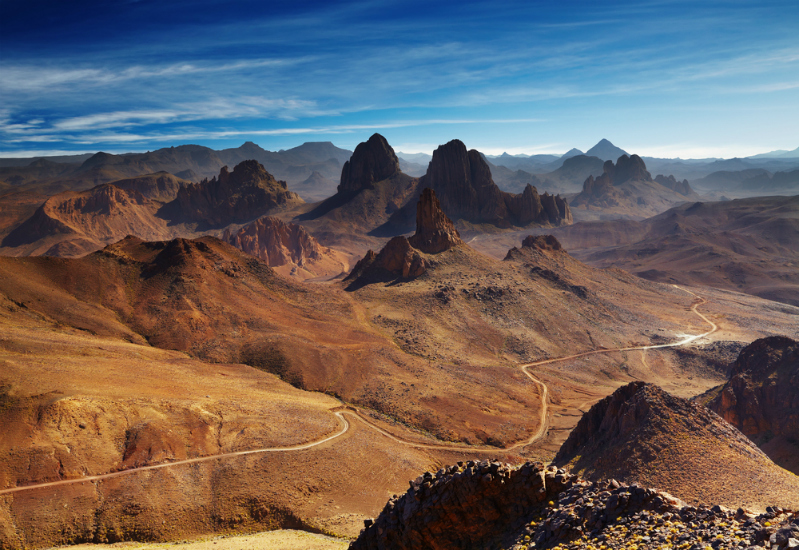
Hoggar Mountains, Algeria (Shutterstock)
Ahaggar National Park, Algeria
We’ll start with the most desolate. Located in the southern part of Algeria and running along the Tropic of Cancer, this protected area boasts the Hoggar Mountain range and Sahara sand dunes. Trivia: In the early 1900s, French priest Charles de Foucauld built a hermitage way high up in the Assekrem (the highest point), and lived among the local Tuareg population.

Elephants at Amboseli National Park, Kenya, with Mt. Kilimanjaro in the background (Amoghavarsha / Wikimedia Commons)
Amboseli National Reserve, Kenya
Amboseli is considered the second most popular park after Masai Mara, due in part to the breathtaking views of Mount Kilimanjaro in the background. The Big Five can all be seen here, but it’s the enormous herds of roaming elephants that set this park apart. Amboseli suffered a debilitating drought in 2009 that killed off many of its animals and forced the Kenya wildlife services to relocate some zebras and wildebeest from other parks to correct the predator-prey imbalance. Luckily, it seems to be back on track and is as beautiful as ever.
Bale Mountains National Park, Ethiopia
Set in the southerly Ethiopian highlands, Bale Mountains is home to five unique ecosystems including grasslands, woodlands, Afro-alpine meadows, moorlands, and forest. With such diversity of landscape, the fauna is just as diverse with wolves, nyalas (an antelope), monkeys, and the endangered Painted Hunting Dog (though none have been spotted in recent years).
Banc d’Arguin National Park, Mauritania
Banc d’Arguin National Park is the most important in Mauritania. This UNESCO World Heritage Site is a crucial stopping point for migratory birds like flamingos, pelicans, terns, and sandpipers. With sand and shell dunes, fishing boats, and virtually no tourists, Banc d’Arguin is a very peaceful place in one of Africa’s less-visited countries.
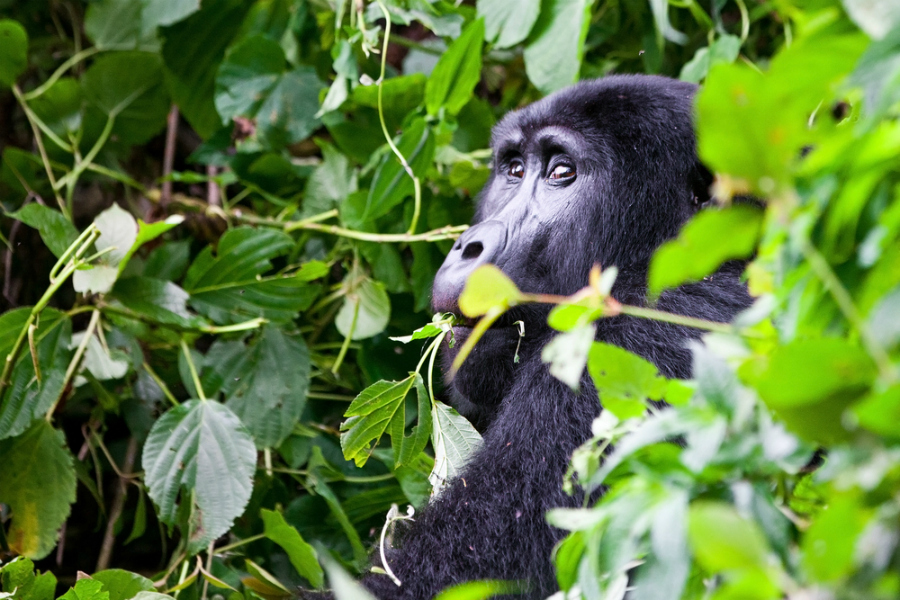
Rare Silverback gorilla in Bwindi Impenetrable National Park, Uganda (Shutterstock)
Bwindi Impenetrable National Park, Uganda
which conserves half of the world’s wild mountain gorilla population. The park is a day’s drive from Kampala, and a magical world of lush, hillyforest in 50 shades of green. Gorilla tracking can take anywhere from an hour or two to the whole day, depending on where the gorilla group is. there’s nothing that quite comes close to the face-to-face encounter with a giant, gentle silverback. Once you’ve reached your gorilla group, you spend an hour with them to observe their very humanlike behavior. You’re unlikely to see much other wildlife in the park but if you’re lucky you could spot elusive forest elephants.
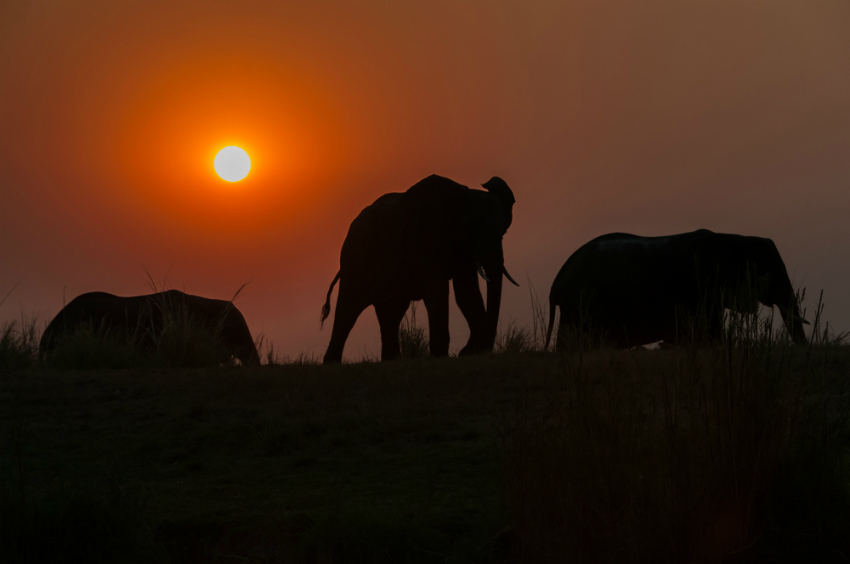
Elephants in Chobe National Park (Shutterstock)
Chobe National Park, Botswana
One of the largest inland waterways in the world, the Okavango River catches rain from Angola and the Kalahari in January. It dumps into the delta, which floods until the summertime, when high temperatures evaporate the water. Since there is a constant back and forth between wet and dry, safaris are offered either on land or on water (or both). Gawk at the Nile crocs, cower away from the hippos, or marvel at the giraffes feeding along the road. Most of the large mammals leave during the winter, and migrate back to feed during the summer.
Cross River National Park, Nigeria
This park contains the last rainforest in Nigeria, preserved via the Nigerian Conservation Foundation, and currently billed as “the pride of Nigeria.” It is home to the indigenous white-faced monkey, drills, lowland gorillas, and forest elephants. It also includes Kwa falls, a small yet beautiful waterfall surrounded by lush rainforest canopy. The Sankwala Mountains run through the park and reach a height of 1,700m, and trees in the park reach heights of over 50m.
Dahlak Marine National Park, Eritrea
Dahlak Marine National Park is one of Eritrea’s few. Dozens of islands make up this off-shore chain of white sand beaches and perfectly blue waters. The warm waters of the Red Sea mean marine life and coral reefs abound with idyllic conditions for diving and snorkeling. While Eritrea isn’t the easiest country to visit, and getting a permit here can take some finagling with the government, if you succeed, you will likely have the entire area to yourself. It’s a truly once in a lifetime experience.
Elba National Park, Egypt
At the extreme southeast corner of Egypt lies Elba National Park, one of the least visited places in the country. Partly due to its remote location and partly due to the disputed border with Sudan, Elba and its peak form a mist oasis, meaning that the freshwater in the area is collected in the form of dew and sitting clouds. With close to 500 plant species as well as animals, this park that dives into the Red Sea is worth the visit for its remoteness alone, if you can get there.
El Kouf National Park, Libya
Unfortunately off limits at the moment due to the instability of Libya, El Kouf is one of the best parks in the country. Set on Libya’s Mediterranean coast, the park is rich in flora and fauna, featuring all types of mammals and dozens of species of birds. Shrubland, sand dunes, and limestone hills contain 90% of all plant species found in the country. Hopefully, peace returns and visitors will be allowed to appreciate El Kouf’s unique ecosystem.
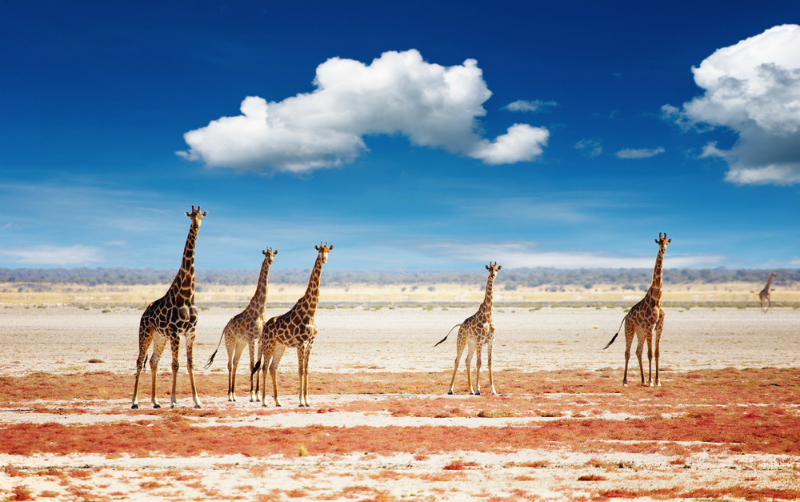
Giraffes at Etosha N.P. (Shutterstock)
Etosha National Park, Namibia
Named a game reserve in 1907 by the governor of then-German South West Africa, Etosha was elevated to the status of national park in 1967. Located in Namibia’s northwest region. it’s a sprawling, sensational wonderland covering roughly 8,600 square miles including the 1,900-square-mile Etosha Pan — a dry, lakebed covered in salt and minerals (much like the Bonneville salt flats in the USA). The park is also home to savanna, grasslands, and woodlands with elephants, lions, leopards, hyenas and more.
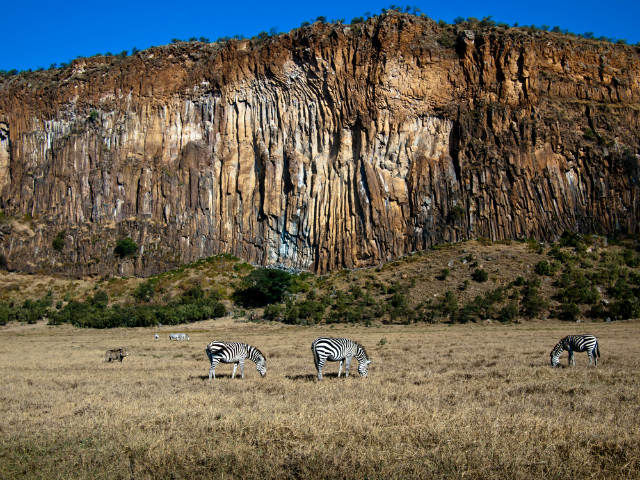
Zebras at Hell’s Gate (Shutterstock)
Hell’s Gate, Kenya
One of the only parks in Kenya that allows visitors to walk or bike through it, Hell’s Gate offers an (extremely!) up-close-and-personal experience with the wild. You can hike down into Hell’s Gate Gorge, which sits atop a geothermal spring, and see steaming sandstone pools hot enough to boil an egg. It’s not surprising the park is referred to as a gate to Hell. When whiling away the night in your tent, you can see hippos wandering about, although it’s highly recommended you keep some distance – they’re not known for being too friendly.
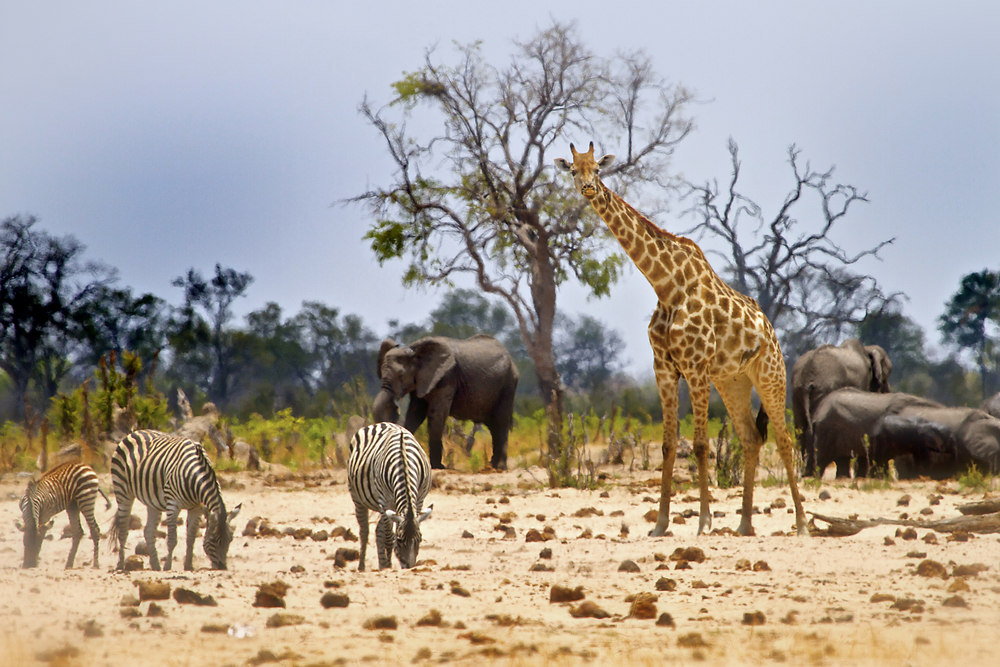
Animals in Hwange National Park, Zimbabwe (Shutterstock)
Hwange National Park, Zimbabwe
Hwange is home to more than 107 species of animals, including, famously, over 40,000 elephants, the endangered painted dog, cheetahs, lions, leopards, and over 400 bird species. The dry season, between July and October, is best for wildlife viewing as thirsty animals will travel long distances to reach the some 60 waterholes or “pans” (many of which are artificially filled by park officials) and the bush is dry and dead (making viewing easier).
Ichkeul National Park, Tunisia
Ichkeul National Park takes its name from the lake that makes up a crucial part of this important wetland preserve. Similar to Banc d’Aguin, Ichkeul is an important stopover for migratory ducks, geese, storks, and flamingos. Construction of a dam has threatened the balance of the marshes, reeds, and other aquatic plant and animal life at this UNESCO Site, but thankfully, the Tunisian government is taking steps to maintain this ecosystem for generations to come.
Ifrane National Park, Morocco
Morocco has many national parks, but Ifrane is one of the most special, especially when it comes to wildlife. Located in the Moyen Range of the Atlas Mountains, the park was established to preserve the diminishing Atlas cedar forests. It’s also one of the last natural habitats for the Barbary Macaque which is now endangered. There are plenty of opportunities for hiking, fishing, and hunting partridge, boar, and hare. Plenty of people come to the area for skiing in the winter as well.
Jebil National Park, Tunisia
While only 20 years old, Jebil National Park is the largest in Tunisia and covers over 150,000 hectares taking up a substantial portion of the south of the country. With sparse vegetation and gorgeous Saharan landscapes, camels, gazelles, hares, jackals, snakes, and other animals can be found here. The park is a great way to experience the natural side of Tunisia as the northern part of the country focuses on Mediterranean towns and Roman ruins.
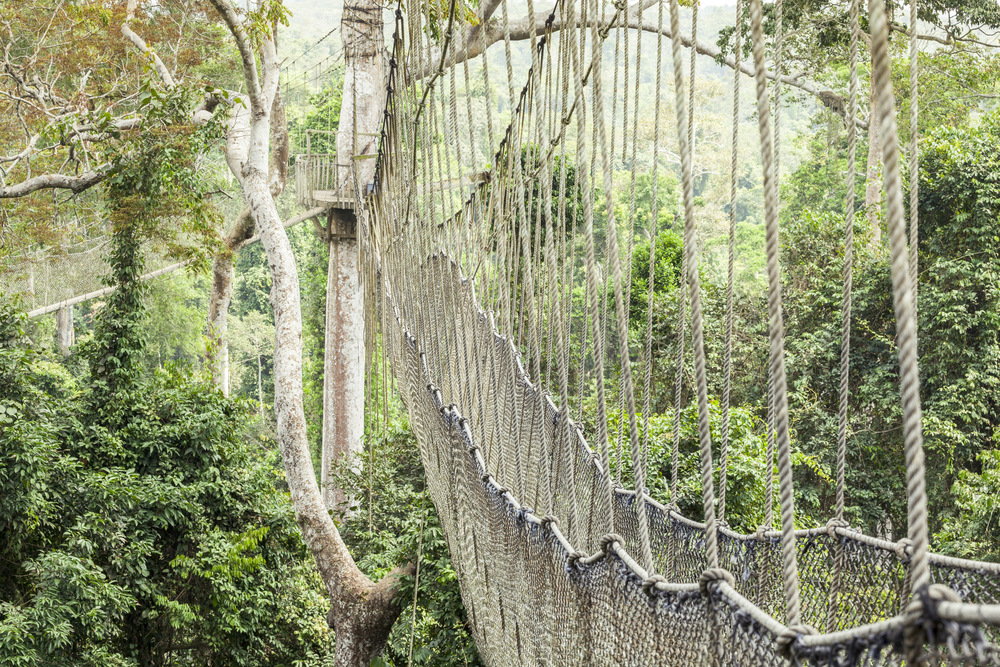
Canopy Walkway in Kakum National Park (Shutterstock)
Kakum National Park, Ghana
This 375 sq km rainforest is bisected by a number of hiking trails, most of which lead up to a breathtaking suspension walkway, 30m above the ground in the forest canopy. A series of seven swaying bridges lead visitors to various viewing platforms, from which you can see some of the forest’s tallest remaining trees. Wildlife-wise, you are most likely to spy a rich variety of butterflies and insects. Primates and elephants are rumoured to live here, but both are extremely rare, with elephants being debatably extinct.

A black-maned lion in Kgalagadi (Shutterstock)
Kgalagadi Transfrontier Park, South Africa
Images of packed jeeps and rental cars crowding around a big cat sighting are not uncommon in some of Africa’s better-known parks and the idea of getting a lion or a leopard to yourself is sometimes a romantic and unattainable notion. Not so in the Kgalagadi, a transfrontier park that straddles South Africa and Botswana. Only a fraction of the tourists that enter the Kruger venture to this hot and dusty park and even at busier times of year, you can expect to spend some quality time with the black-maned Kalahari lions that the park is best-known for. Some people end up with an encounter a little closer than they bargained on, since many of the park’s camps are unfenced…
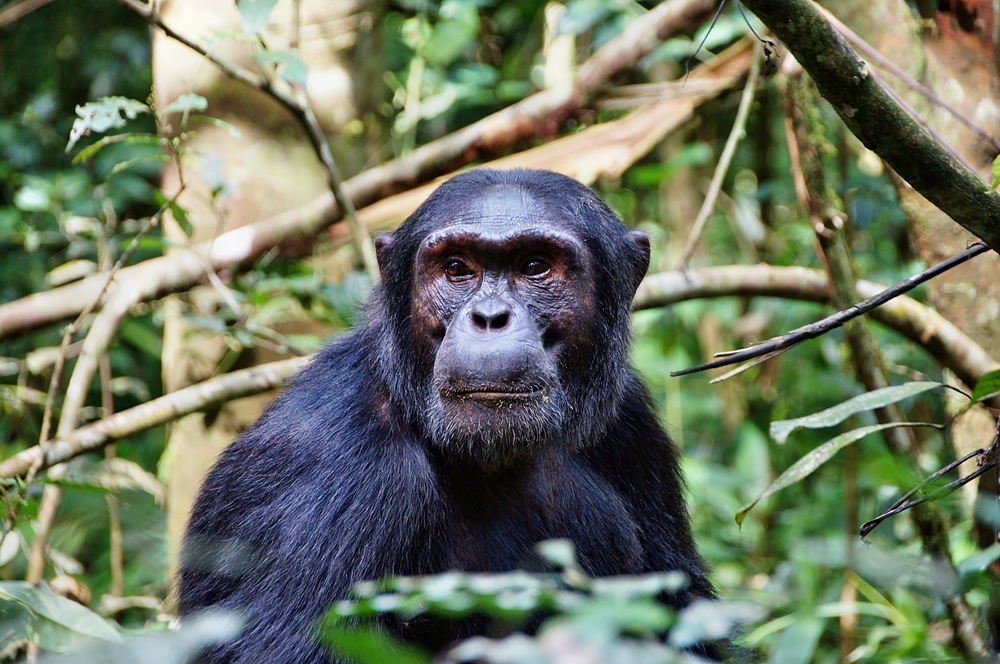
Shutterstock
Kibale Forest National Park, Uganda
Uganda’s most famous chimpanzee tracking park boasts over 1000 of the great apes. The Kanyachu chimp group, which has been habituated to humans for more than 20 years, is the group you’ll track on a three-hour walk. You can also do a full-day chimp habituation experience, which allows you to visit a chimp group undergoing habituation from when they wake up in the morning until they make their overnight nests. In addition to chimps, the lush rainforest, which is interspersed with patches of swamp and grassland, has an incredible diversity of primates, with 12 other species, including grey cheeked mangabey, olive baboons, red colobus and vervet monkeys (the greatest concentration of species in Uganda, and the world). The park forms a continuous forest with Queen Elizabeth National Park (which is half a day’s drive from Kibale) and provides an important 100-mile-long wildlife corridor, to allow for the movement of animals. The area around Kibale is almost worth a trip on its own. The park borders on the Ndali-Kasenda Crater Lakes, which is a gorgeous otherworldly landscape of ancient volcanic lakes.
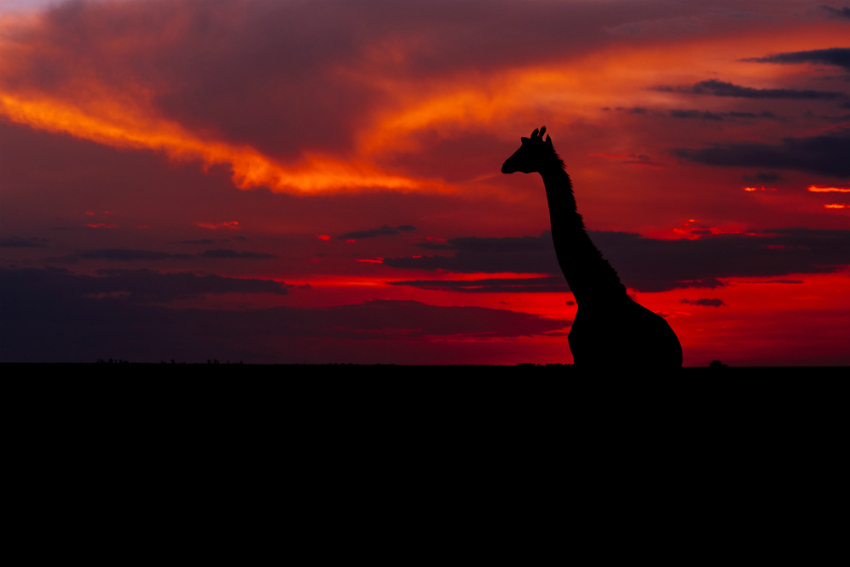
Giraffe in Kruger National Park (Shutterstock)
Kruger National Park, South Africa
South Africa’s most-visited national park, prized for its diversity of species and accessibility, covers more than 7,000 miles of protected area in the northeast tip of the country. Proclaimed by founder Paul Kruger in 1898 as a government wildlife park, its 147-plus species of mammal attract visitors from around the world. There are nine entrance gates to the park, and plenty of lodging and safari tour options.

Lake Nakuru (Syllabub/Wikimedia Commons)
Lake Nakuru National Park, Kenya
Flamingoes, flamingoes, flamingoes! Lake Nakuru is famous for its huge flocks of flamingos that gather in the shallow soda lake (a lake with high alkalinity) in the Rift Valley. The flamingos, along with hundreds of other bird species, blanket the surface of the lake giving the impression that you’ve just entered a real-life Candyland. Lake Nakuru also serves as a sanctuary for endangered black and white rhinos, and offers a good shot at spotting baboons, lions, gazelles, and the elusive leopard, among others.
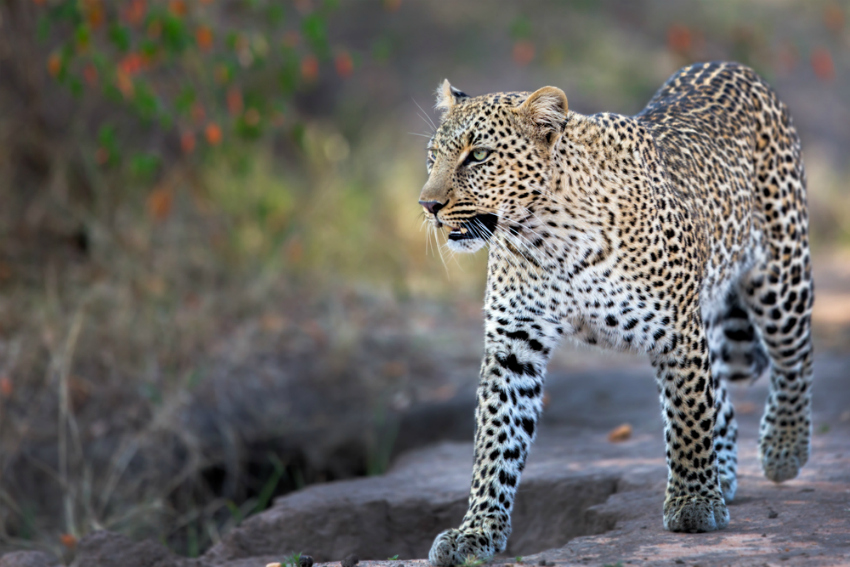
Leopard in Masai Mara National Park (Shutterstock)
Masai Mara National Reserve, Kenya
Masai Mara is the most popular wildlife park in Kenya, and for good reason. Each fall (July to October), you can see the amazing migration of hundreds of thousands of wildebeest and zebra, as well as large families of elephants, buffalo, lions, and more. The Mara River, home to hippos and crocodiles, runs north-south through the entire reserve. Maasai tribesman offer cultural tours -a unique addition to the wildlife experience. The downside to Masai Mara is just the numbers of tourists. It’s not uncommon to see several Jeeps watching a single lion devour its prey, but the views make it worth it.
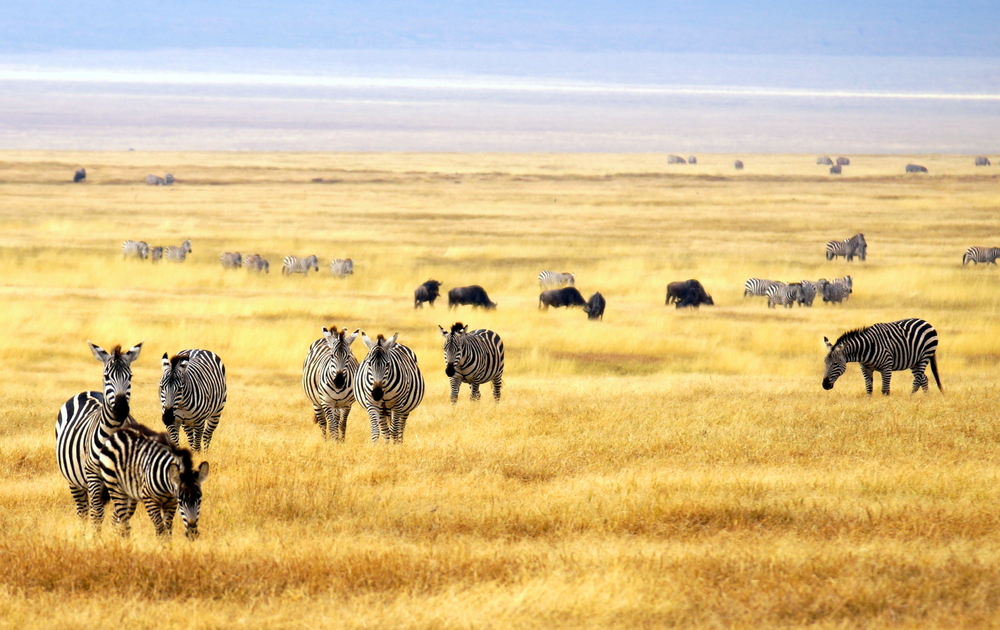
Shutterstock
Meru National Park, Kenya
A Cinderella story, Meru was nearly destroyed by poachers, but has been restored to the beautiful reserve it is today. An excellent place to spot the Big Five (lion, African elephant, Cape buffalo, leopard, and rhinoceros) as well as plains species and rarer animals, Meru offers more solitude than many of the other parks. During its restoration, it was off limits to developers, keeping the natural beauty of the land intact. It also draws fewer visitors than other parks.
Mole National Park, Ghana
Mole is probably the best place for wildlife viewing in the country, and that includes birds as well. There are around 330 bird species in the park, along with two large watering holes where birds and animals like to sit, making it easy to get photographs. Birds in the park include saddle-billed storks, grey woodpeckers, pygmy sunbirds, and more. Be prepared to go down a dirt road for awhile when traveling to the park.
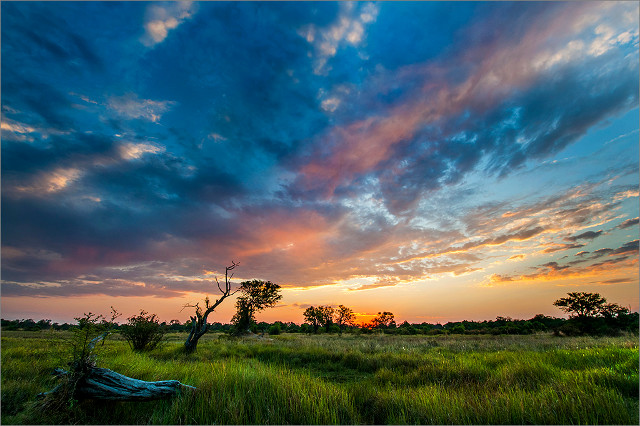
Wikimedia Commons
Moremi Game Reserve, Botswana
Encompassing the eastern part of the Okavango Delta, the stunning Moremi reserve is home to a vast number of animals, including nearly 500 species of birds, Cape buffaloes, Angolan giraffe, Southwest African lions, leopards, South African cheetahs, hyenas, jackals, impala, and wild dogs. Many native people live in the reserve, including the bushmen who’ve called the delta home for thousands of years. A fun way to explore the area is via mokoro, a type of local dugout canoe that plies the many waterways.

Mt. Kenya (Shutterstock)
Mount Kenya National Park, Kenya
Mount Kenya, a UNESCO World Heritage site and Africa’s second highest peak, looms over the park and offers more than just a pretty landscape. The mountain provides water for about 50 percent of Kenya’s population, produces 70 percent of the hydroelectric power for the country, and is thought to be the seat of the Kikuyu God, Ngai. Although its not known for a vast array of wildlife (most people visit the park to hike the mountain and explore the surrounding region), it is home to several species of monkey, as well as Cape Buffalo.
Murchison Falls National Park, Uganda
I visited this park in 2011, and thought it looked like the setting for “The Lion King.” Turns out it’s where the illustrator came for his inspiration. So there you go! In Uganda’s Northwest corner near the Congo border, you’ll find this cascade pouring down into the break end of the Victoria Nile. In 1954, Ernest Hemingway drunkenly crashed a small plane here. The morning game drive is stunning; you’ll see four of the “big five” (lions, elephants, buffalo, and leopards) as well warthogs, crocs, hippos and other amazing species.
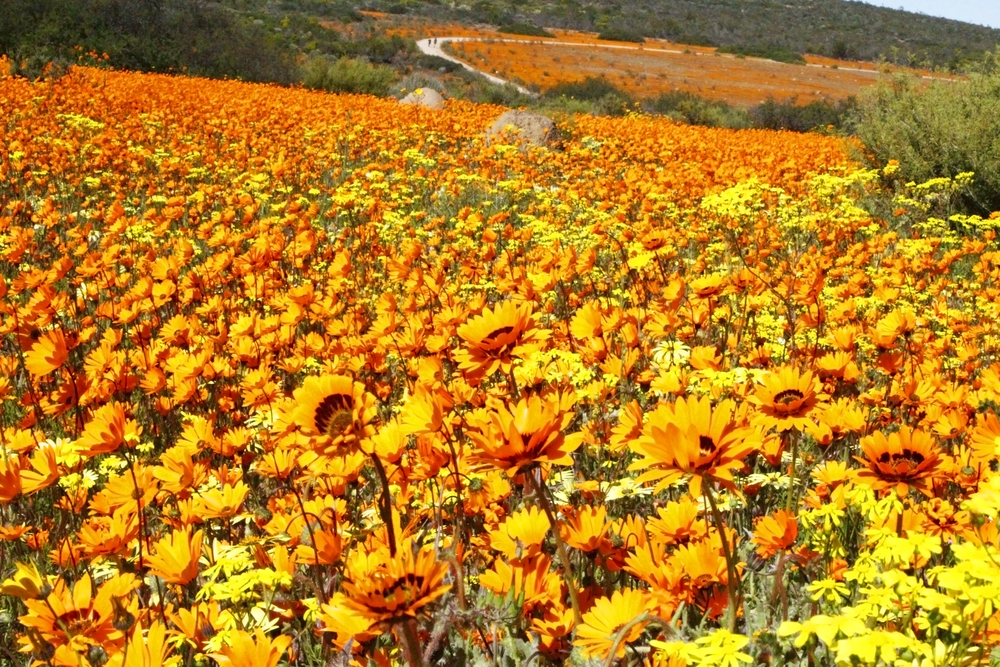
A landscape in Namaqua National Park (Shutterstock)
Namaqua National Park, South Africa
In spring, Namaqua National Park explodes with the multi-coloured petals of the flowers that bloom following winter rains, and with the tourist feet that come to witness the annual spectacle. Some 3500 plant species are known to thrive here and from August to September you can expect carpets of purple, orange, yellow and white to liven up this otherwise barren landscape. For the rest of the year, Namaqua is largely ignored and while it’s not so pretty without its plumage, there are still plenty of plants to seek out, including lots of succulents and the inimitable quiver tree.
Ngorongoro Conservation Area, Tanzania
Recognized as one of the Seven Natural Wonders of Africa, the Ngorongoro Conservation Area is a must on most visitors’ itinerary of northern Tanzania. Set in the largest unfilled volcanic caldera in the world, the volcano collapsed millions of years ago leaving a depression 2,000 feet (600 meters) deep and covering over 100 square miles (250 km). Home to many of the species found in nearby Serengeti, tens of thousands of animals live in this relatively small area.
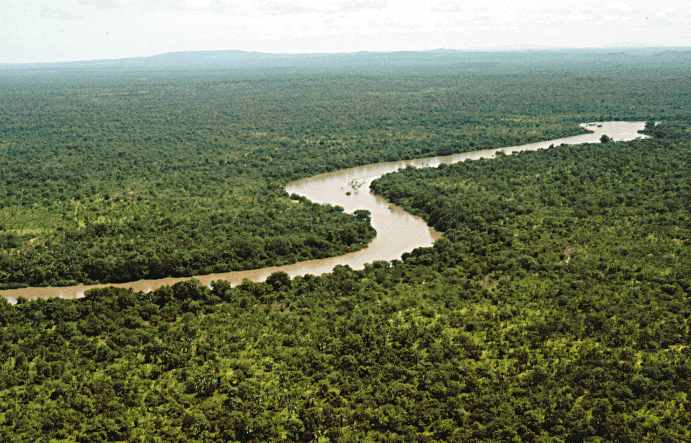
The Gambia River flowing through Niokolo-Kobo National Park (Courtesy of US Gov / Wikimedia Commons)
Niokolo-Koba National Park, Senegal
A UNESCO World Heritage Site, Niokolo-Koba National Park is fantastic for watching birds and is home to over 330 species. Inside the park you can find ground hornbill, tree ducks, eagles, bateleurs, and the violet turaco. The Gambia River also flows through the park, and adventurous travelers might want to take a canoe down it.
Nyungwe National Forest, Rwanda
Nyungwe Forest is the best preserved old growth montane rainforest in East and Central Africa. Covered in dense forest and jungle, the park provides sanctuary for a dozen species of primates including Silver, Golden, Vervet, and L’Hoest’s Monkeys. The main draw for visitors here is tracking chimpanzees which are found in abundance. Ornithologists will rejoice as close to 300 bird species can be found, some of which are endemic to only the area. One of best ways to check out a panorama of the park is to take a canopy tour suspended high above the forest floor.
Parc National de la Pendjari, Benin
Many consider Parc National de la Pendjari in Benin the best national park in West Africa. Named after the local Pendjari River, it is part of the greater WAP Complex, which protects areas in Benin, Burkina Faso, and Niger. Hosting endangered species such as elephants, antelopes, and hippos, and known especially for its rich bird species, it is home to the pallid herrier and the African swallow-tailed kite. The lion population is considered one of West Africa’s largest, and the rare Northwest African cheetah lives here. Burkina Faso’s Arli National Park is adjacent and provides wonderful safaris and vistas.
Perinet Reserve, Madagascar
In Madagascar you won’t find savanna or desert, but rain forest. The Perinet Reserve, also called the Analamalaotra Special Reserve, is part of the greater Andasibe-Mantadia National Park. The entire park is about 155 square kilometers, and its rainforest flora hosts multiple species. Most popular is the indri, a large lemur native to the island. It has a haunting cry. Logging and deforestation have threatened this unique species, but the park does a pretty great job of keeping it safe.
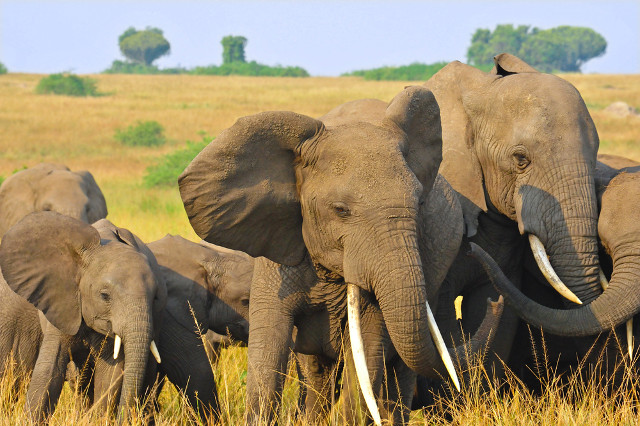
Queen Elizabeth National Park (Shutterstock)
Queen Elizabeth National Park, Uganda
To the north of Bwindi, the flat acacia-dotted savannas of Queen Elizabeth N.P. look like the Africa you see on the National Geographic Channel. This is Uganda’s most visited park, a landscape of grassy plains, crater lakes and forested gorges, famous for its tree-climbing lions (only found in one other place in the world), which can be spotted in the Ishasha section. Though the Ugandan-Tanzanian war in the late 1970s wiped out a good number of the park’s animals, many species have since recovered and on game drives you’re likely spot lots of elephants as well as buffalo and antelope such as the Ugandan kob. At sunset take a boat cruise on the Kazinga Channel between Lake George and Lake Edward, to spot loads of hippos, crocodiles and some of the 600 bird species.
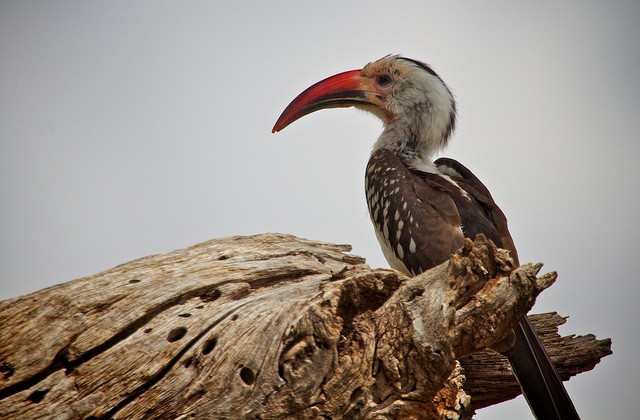
Courtesy of Stuart Richards/Flickr.com
Samburu Game Reserve, Kenya
Head over to Samburu, a reserve known for its zebras, giraffes, kudu, ostriches, and gazelles, for a more unique wildlife experience. While the Big Five and others (such as cheetahs, leopards, antelope) still have a presence, it is best known as a wildlife and bird watching haven for those hoping to see a wide variety of species. Samburu also receives fewer visitors than some of the other parks, allowing more opportunities to get up close and personal.
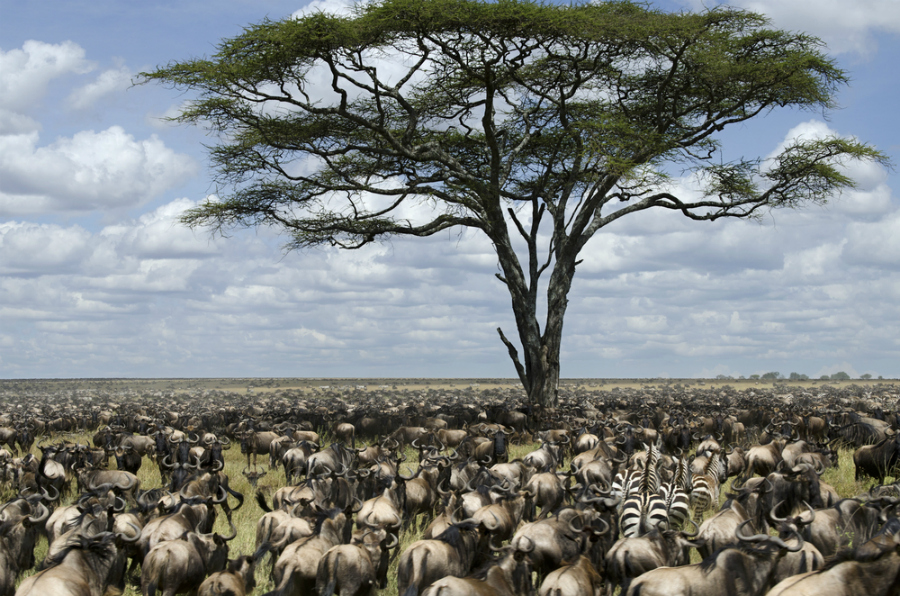
Shutterstock
Serengeti National Park, Tanzania
With more than 5,000 square miles of protected grasslands, savanna, and forests, the Serengeti is one top spots Africa to see the “Big Five.” It’s also home to gazelle, cheetah, baboons, giraffe, and impala. More than 3,000 lions live here — Africa’s largest concentration. A massive annual migration occurs between the Serengeti and the Maasai Mara, with more than 2.5 million animals making the round-trip journey every year. The name Serengeti is derived from the local Maasai word, siringet — “the place where the land runs on forever.”
Simien Mountains National Park, Ethiopia
One of the most stunning and unique places in all of East Africa, the Simien Mountains are spread throughout northern Ethiopia. Famed for its incredible hiking, the park is home to many endangered species like the Ethiopian wolf and walia ibex, which are endemic to only this area. The main draw here though is to marvel at troops of gelada baboons which number in the thousands. With plenty of places to camp and excellent hiking, we recommend hiring a guide and taking a few days to explore the area and get back to nature.
Siwa Oasis, Egypt
Set deep in the western desert, the town of Siwa rises like a green and white mirage out of the vast sands of the Sahara. Possibly the most isolated settlement in the country, the oasis is home to Berbers. Olives and dates are cultivated here and Siwa is home to several important cultural festivals. Needless to say, it is one of the most interesting places in the country and a great place to escape the crowds of Egypt’s historic monuments and get back to nature.
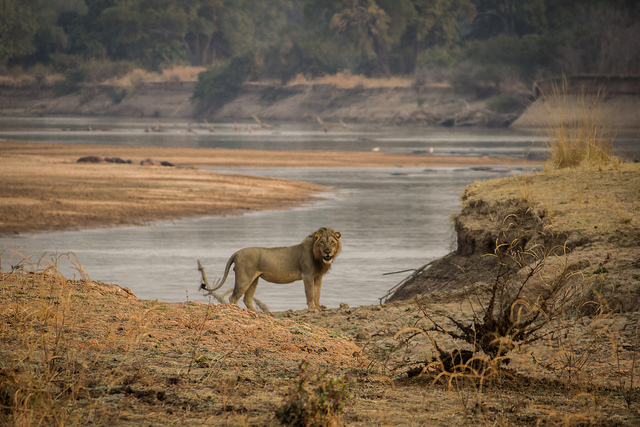
Alex Berger/flickr
South Luangwa National Park, Zambia
South Luangwa is one of the greatest wildlife sanctuaries in the world, with a huge variety of birds and mammals. You can go the traditional safari route and pile into a 4×4 vehicle, but this park really excels at walking safaris, as its flat grasslands and numerous tracks make it the ideal spot for one.
Tassili n’Ajjer National Park, Algeria
One of the most dramatic places on the African continent, Tassili n’Ajjer is a national park in the extreme south of Algeria noted for its breathtaking sandstone arches and prehistoric rock art. A UNESCO World Heritage Site, several oases dot the area and it is one of the most popular tourist excursion for those who make it so far south. The lunar like landscape and sparse vegetation will continue to attract visitors for years to come.
Tazekka National Park, Morocco
Morocco is much more diverse than many people realize and Tazekka is a testament to that. Deep canyons, caves, streams, and waterfalls abound in this heavily wooded park set in the Middle Atlas Mountains. Ideal for hiking and camping on day trips from Fez, jackals, genets, hares, otters, porcupines, and Barbary wild boars are just a few of the creatures you may encounter trekking through the forests here.
Tlemcen National Park, Algeria
One of the richest national parks in Algeria, Tlemcen has over 140 species of animals including over 100 bird species. Natural caves, waterfalls, and forests can also be found here, along with historic mosques and mausoleums, including Sidi Boumediene Mosque which was built in the year 739 A.D.
Toubkal National Park, Morocco
Set in Morocco’s stunning Atlas Mountains, Toubkal National Park is one of the most popular in Morocco. It helps that it also features the country’s tallest peak, the eponymous Mount Toubkal which is a dizzying 4,167 meters (13,671 feet). Popular with trekkers and climbers, the park has plenty of other rugged mountains capped with snow most of the year and great hiking, not to mention wildlife.
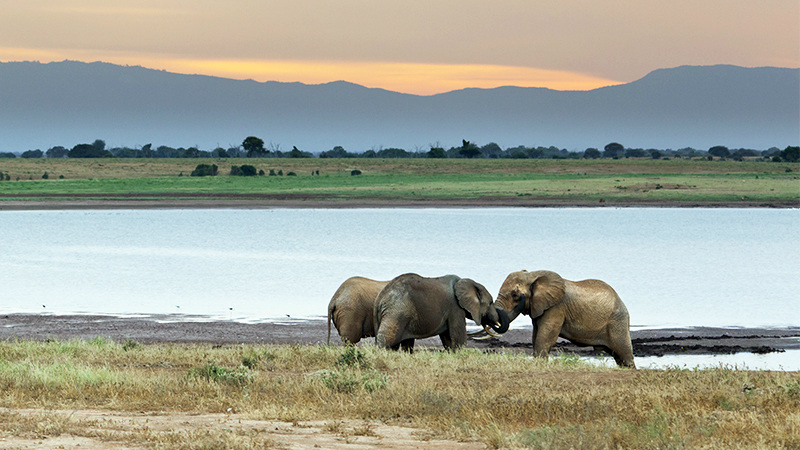
Shutterstock
Tsavo (East? West?) National Park, Kenya
The biggest national park in Kenya, Tsavo is situated on the Kenyan coast, offering the best location for a wildlife safari/beach holiday. Visitors come to the park to see its famed maneless lions, red-skinned elephants, black rhinos and others. They can also spend time loafing on the beach and unwinding. Not too shabby.
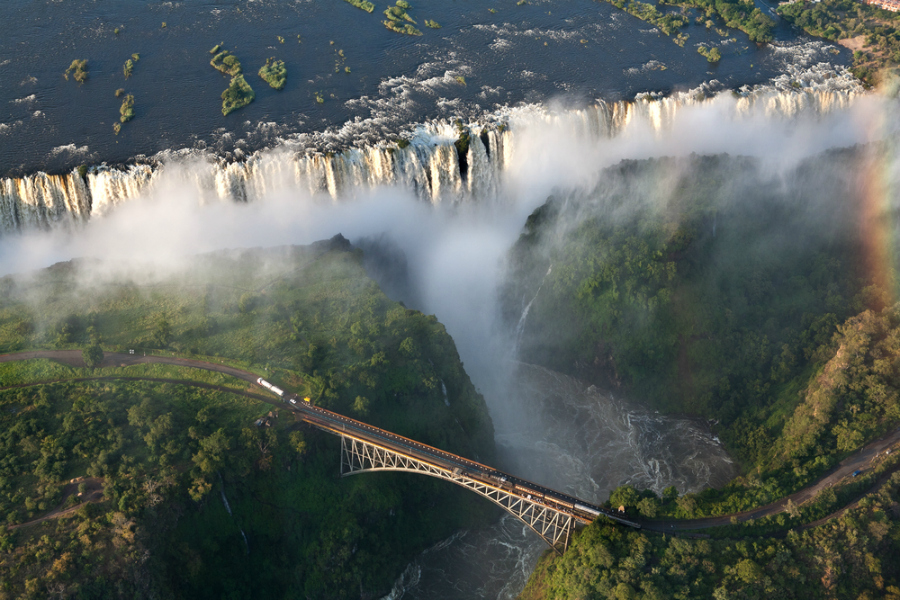
Victoria Falls (Shutterstock)
Victoria Falls National Park, Zimbabwe

The Virunga volcanoes, Rwanda (Shutterstock)
Virunga National Park, Democratic Republic of Congo
From the Virunga Mountains in the south to the Rwenzori Mountains in the north, this park spans 3,000 square miles. Also established in 1925, it shares the title with Volcanoes National Park as the first-ever national park of Africa. Uganda’s Queen Elizabeth Park also borders it. The most magnificent sight is the Lava Lake of the Nyiragongo Volcano, the most voluminous of its kind in the world. With stunning mountainscapes and a wonderful biodiversity, the park has seen a recent resurgence in tourism after previous incidents with poachers and armed militias scared visitors away.
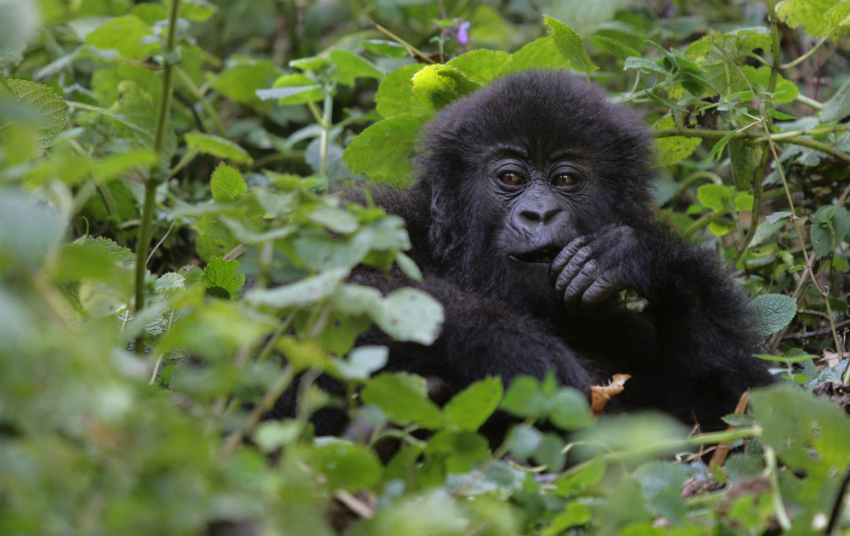
Young gorilla at Volcanoes National Park, Rwanda (Shutterstock)
Volcanoes National Park, Rwanda
One word: Gorillas! This is where Dian Fossey, famed gorilla scientist and enthusiast, made the friends of a lifetime — and was buried. Established in Africa in 1925, the continent’s first national park holds in the bamboo forests of its upper slope 300 endangered mountain gorillas. Tourism is tightly controlled here: less than 70 viewing or visitation permits are issued per day to see the gorillas. The lush rainforests and bamboo lead to five major volcanoes which can be trekked in guided tours. High altitudes and high adventures await.
Waza National Park, Cameroon
Located on the edge of the Sahel, Waza National Park is a great place to watch birds through the seasonal marshes and grasslands. The park is home to Abyssinian rollers, waxbills, snake eagles, helmeted guineafowl and much more. The park is only accessible via vehicle and the accompaniment of a guide.
White Desert, Egypt
The White Desert is one of Egypt’s most stunning attractions. With only a few thousand inhabitants (mostly clustered around the village of Farafra), chalk white rock formations contrast with golden Saharan sands which give the desert its name. The White Desert is not as rich in wildlife as some other parks, but it is one of the most beautiful places in the Sahara to visit.
Zellaf Nature Reserve, Libya
Deep in the heart of the desert of western Libya lies the Zellaf Nature Reserve, one of the Sahara’s only nationally designated protected wildlife areas. Practically meant for camping, the 400 square miles consist of rolling sand dunes and rocky outcroppings with oryx, gazelle, and camels being the most common animals. Beautiful in its desolation, not many tourists have been here lately due to the political climate in Libya.
Want to discover the finer side of Africa? Sign up for our weekly newsletter.
